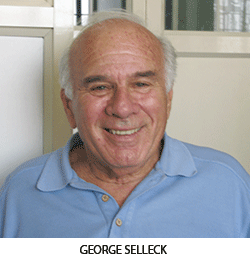 The game of athletics has become a perfect model for the Game of Life — Dan Millman, author, Way of the Peaceful Warrior (2013)
The game of athletics has become a perfect model for the Game of Life — Dan Millman, author, Way of the Peaceful Warrior (2013)
The world is changing — not necessarily for the better. Think of the spate of terrorist attacks worldwide perpetrated by frustrated, fanatical and twisted individuals who instead of choosing to work together to create a better world, promote hatred, discrimination, intolerance and bigotry.
Against this backdrop, while many people in the sports world persist with viewing sport in a single dimension — what happens on the field, track or gym — the unifying potential of sports extends far beyond playing fields and arenas.
Unfortunately, too many parents and coaches are oblivious of the healing and binding potential of sports. There is a Zen story that makes this point. An old monk returning home one night finds a thief in his hut who had discovered the monk had nothing worth stealing. “You’ve probably come a long way to rob me and you should not return empty handed, so take my clothes as a gift,” says the monk. Subsequently, sitting naked watching the moon, the monk adds: “Poor man. I’m sorry I couldn’t give him the beautiful moon.” Like the thief in the story, parents and coaches scrounge on the floor for rags when the incomparable beauty of the moon is ours for the taking. If only we would elevate our gaze.
The following statements summarise how we should meet the challenge of helping young people attain their full potential in sports, and consequently in life.
Believe in the potential of children and youth. Many adults have given up on today’s youth. Too often they scold them for being slackers, being entitled, addicted to technology and failing to develop life skills. Even if some of this criticism is warranted, don’t blame the kids. Like all generations before them, they have their upside and downsides. We should believe their smarts and tech skills offer great promise in a complex and confusing world.
Don’t believe they won’t realise their potential. A common complaint is that youth are unprepared for adulthood. If so, who failed to prepare them? Parents, teachers, coaches! Consider that 100 years ago, four-year-olds were doing everyday chores around the house, 15-year-olds were working the farm, 17-year-olds were in army frontlines and 19-year-olds were getting married. Teens are capable of accomplishing more than we believe. We have lowered our expectations and unfortunately, many of them have followed suit. We’ve only scratched the surface of what children and youth can achieve if well mentored.
Contemporary times hinder youth from reaching their potential. Parenting, teaching and coaching styles, prescription drugs, media and technology, marketing messages and video games can stunt the growth and maturity of youth. New millennials are over-exposed to information sooner than they are ready, and under-exposed to the real-life experiences they need.
Rethink the way we connect and lead children and youth to enable them to maximise their potential. As parents, teachers, coaches, and youth workers, we must re-examine how we connect with and equip today’s children and youth for adulthood and success. We have done far more protecting than preparing: we have focused on preparing the path for our kids rather than preparing kids for the path.
So how do we — parents, teachers, coaches — enable young people to fulfil their potential?
Share what you see with them. Too often, young people are unaware of their inherent potential or aptitude. Therefore when you discern their potential, let them know and get other adults — coaches, teachers — to back you up. Most of today’s youth have what psychologists term “high arrogance, low self-esteem”. We must help them discover their potential by expressing our belief in them.
Use the word “yet”. When young people say they just aren’t good enough at math, science, reading, or sports, they aren’t lying. Stanford professor Dr. Carol Dweck recommends extensive use of the word “yet”. You could agree that an athlete or a student isn’t good at something yet. This conveys the message that improvement is expected.
Help them own their progress and development. Let children know that the best person who can help them improve classroom or sports performance is themselves. Too often adults encourage the blame game culture and allow kids to blame someone else for their inadequate performance. We need to enable them to take ownership of their sub-optimal or failed performance. That is the first step towards improvement.
Position your standards correctly. It’s easy to set performance standards too high or too low. Coaches are trained to assess potential, and must set standards wisely. All adult mentors must help students and athletes attain new heights they may not reach on their own. But setting standards too high can prove discouraging. Young people are capable of much more than they realise, but not the impossible.
(Dr. George Selleck is a San Francisco-based advisor to EduSports, Bangalore)